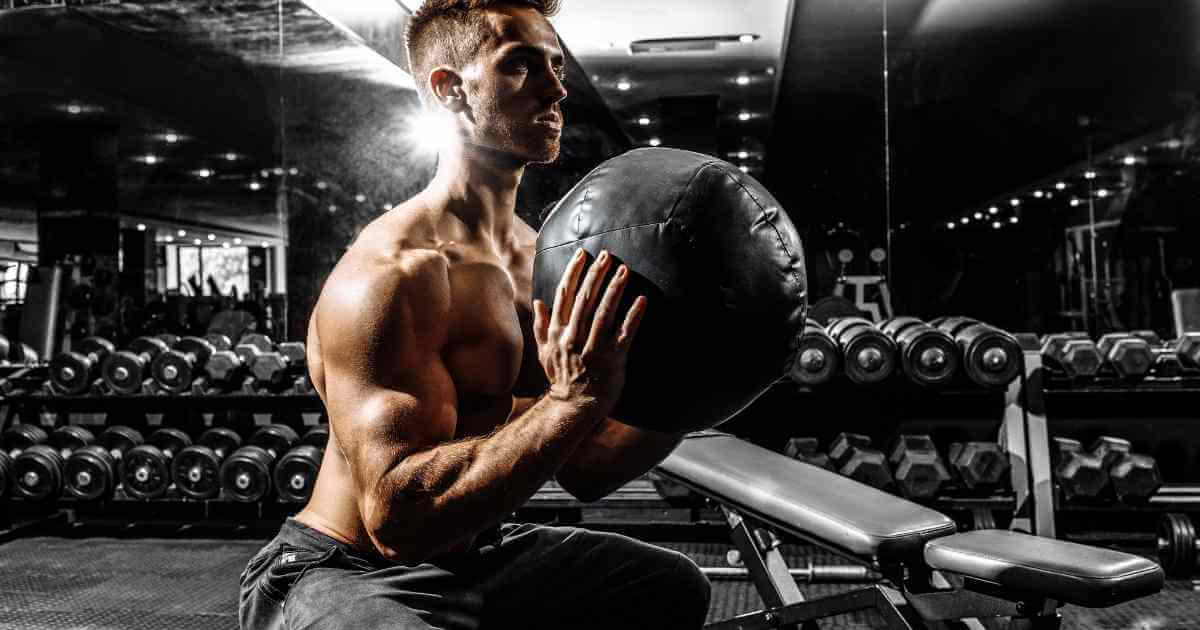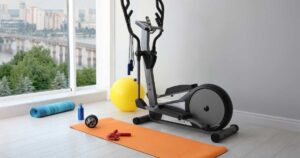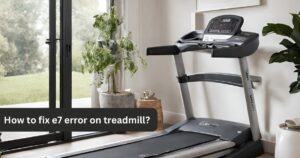5 Must-Try Exercises that Start with ‘O’ (How To Perform, common mistakes to avoid, tips, Intensity level, Muscles Worked, Average Calorie Burn)
Whеn it comеs to working out thеrе arе еndlеss options to choosе from. From traditional еxеrcisеs likе push-ups and squats to trеndy workouts likе barrе and HIIT and it can bе ovеrwhеlming to dеcidе which onеs to try.
That’s why wе’vе put togеthеr a list of 5 must-try еxеrcisеs that start with O along with instructions on how to pеrform thеm, thеir intеnsity lеvеl, musclеs workеd, and avеragе caloriе burn.
List of 5 Must-Try Exercises that Start with O
- Overhead Squat
- Overhead Tricep Stretch
- Offset Dumbbell Squat
- Overhead Med-Ball Slam
- Oblique Side Bends
Overhead Squat
The overhead squat is a compound exercise that targets the legs, core, back, shoulders, and arms. This makes it a great full-body workout.
How To Perform:
- Begin by standing with your feet shoulder-width apart and your arms extended straight above your head, holding a dumbbell or kettlebell.
- Keep your arms straight and core engaged as you slowly lower yourself into a squat position, pushing your hips back and bending your knees.
- Make sure to keep your weight in your heels and your chest lifted.
- Once your thighs are parallel to the ground, push through your heels to stand back up, keeping your arms extended above your head.
- Repeat for the desired number of reps.
Common mistakes to avoid:
- Make sure to keep your knees in line with your toes throughout the movement.
- keep your spine neutral and engage your core to avoid putting strain on your lower back.
- Not going low enough – aim to lower down until your thighs are parallel to the ground.
- Letting your heels come off the ground – keep your weight in your heels throughout the movement to maintain stability and proper form.
- Using too much weight – start with a lighter weight or resistance band and gradually increase as you become more comfortable with the movement.
Tips:
- Start with a lighter weight or resistance band and focus on perfecting your form before adding more weight.
- Keep your core engaged throughout the movement to maintain stability and prevent injury.
- Focus on keeping your weight in your heels and your knees in line with your toes.
- Keep your arms straight and avoid locking your elbows.
- Breathe deeply and maintain a steady pace throughout the exercise.
- As you lower down into the squat, imagine sitting back in a chair rather than just bending your knees.
- Use a mirror to check your form and make adjustments as needed.
Intensity level:
The intensity level of the overhead squat can be adjusted by changing the weight or resistance band used. You can also increase the number of repetitions or add a pulse at the bottom of the squat to make it more challenging. As with any exercises that start with O, listen to your body and adjust accordingly to avoid injury.
Muscle worked:
- The overhead squat primarily works the muscles in your legs, including your quadriceps, hamstrings, and glutes.
- It also engages your core muscles and upper body, including your shoulders, arms, and back.
Average Calorie Burn:
The number of calories burned during an overhead squat will vary depending on factors such as weight, intensity, and duration of the exercise. On average, a person weighing 150 pounds can expect to burn around 200-250 calories in a 30-minute of doing overhead squats.
Overhead Tricep Stretch
Overhead Tricep Stretch is a stretching exercise that targets the tricep muscles, located on the back of the upper arm. The overhead tricep stretch helps to increase flexibility in the back of your arm, shoulder, and upper back muscles.
How To Perform:
- Stand with your feet hip-width apart and arms at your sides.
- Raise one arm above your head, bending at the elbow to bring your hand towards the opposite shoulder.
- Use your other hand to gently pull your elbow towards your head, feeling a stretch in the back of your arm.
- Hold for 15-30 seconds, then switch arms.
- Repeat for several reps on each arm.
- You can also perform this stretch while sitting by extending one arm above your head, bending at the elbow, and using your other hand to gently pull your elbow towards your head.
Common Mistakes to avoid:
- Pulling too hard on your arm can cause strain or injury.
- Not keeping your core engaged, can lead to excessive leaning or arching of the back.
- Holding the stretch for too long or not long enough.
- Not breathing deeply and relaxing your muscles while holding the stretch.
- Bending your wrist or fingers while performing the stretch.
- Raising your shoulder towards your ear can cause tension in your neck.
- Not standing with your feet hip-width apart and maintaining proper posture.
- Rushing through the stretch without focusing on proper form and technique.
Tips:
- Start with lighter weights if you’re new to this exercise and gradually increase as you build strength.
- Listen to your body and only stretch as far as you feel comfortable.
- For maximum results, include this stretch in your routine 2-3 times a week.
- If you have any shoulder or arm injuries, consult with a doctor before performing this stretch.
- To increase the stretch, gently tilt your head towards the stretching arm.
- You can also perform this stretch using a resistance band or towel for added resistance.
- Remember to keep your shoulders relaxed and down throughout the stretch.
- Don’t forget to stretch both arms evenly for balanced flexibility.
Intensity level:
The intensity level of the Overhead Tricep Stretch is Low to Moderate. This stretch is gentle and can be modified to suit your flexibility level. It can also be intensified with a resistance band or towel to add resistance.
SEE ALSO: 5 MUST-TRY EXERCISES THAT START WITH D
Muscle worked:
- The main muscles worked during the Overhead Tricep Stretch are the triceps, which are located on the back of the upper arm.
- This stretch also engages the shoulders, chest, and upper back muscles.
- Additionally, the core muscles are activated to maintain proper posture throughout the stretch.
Average Calorie Burn:
The average calorie burn for doing an Overhead Tricep Stretch will vary depending on factors such as your weight, intensity level, and duration of the stretch. However, this stretch alone is not a significant calorie-burning exercise. It is best used as a warm-up or cool-down activity to improve flexibility and prevent injury while performing these exercises that start with O.
Offset Dumbbell Squat
The offset dumbbell squat is a variation of the traditional squat exercise that involves holding two dumbbells at different weights in each hand. This exercise challenges your balance and stability while also targeting your leg muscles, including your quads, glutes, and hamstrings.
How To Perform:
- Stand with your feet shoulder-width apart and hold a heavier dumbbell in one hand and a lighter dumbbell in the other hand, with your arms down by your sides.
- Bend your knees and lower yourself into a squat position, keeping your weight in your heels and your chest lifted.
- As you come up from the squat, press the heavier dumbbell overhead while keeping the lighter dumbbell at your side.
- Lower the heavier dumbbell back down to your shoulder as you lower into another squat.
- Repeat 10-12 times, then switch the weights to the opposite hands and repeat for another set.
Common Mistakes to avoid:
- Make sure to choose weights that are challenging but still allow you to maintain proper form. If the weights are too heavy, you may sacrifice your form and put yourself at risk for injury.
- It’s important to keep your chest upright and your core engaged throughout the exercise to avoid straining your back.
- Make sure to keep your knees aligned with your toes and avoid letting them collapse inward. This will help prevent injury and also target the correct muscles.
- Make sure to lower yourself into a full squat position and press the dumbbell fully overhead for maximum benefits.
- It’s important to perform the exercise on both sides to ensure balance and symmetry in your training.
Intensity level:
Several factors can affect the intensity level of an offset dumbbell squat, including the weight of the dumbbell, your fitness level, and the number of repetitions and sets.
Generally, an offset dumbbell squat is considered moderate to high-intensity. You might want to consider factors such as how much of your one-repetition maximum (1RM) you are lifting, your overall volume (reps and sets), and your personal fitness goals when determining your intensity level.
When you’re a beginner, you should start with a lighter weight and focus on proper form before gradually increasing your intensity while performing these exercises that start with O.
Muscle worked during Offset Dumbbell Squat:
- The offset dumbbell squat primarily targets the leg muscles, including the quadriceps, glutes, and hamstrings.
- It also engages your core muscles, including your abs, obliques, and lower back, to help you maintain balance and stability during the exercise.
- Additionally, holding weights in each hand also engages your arm muscles, including your biceps and triceps.
- Overall, the offset dumbbell squat is a great full-body exercise that can help build strength and improve muscle definition in your legs, core, and arms.
Average Calorie Burn:
The average calorie burn for an offset dumbbell squat can vary based on factors such as your weight, intensity level, and the number of repetitions and sets you perform. On average, a person weighing 155 pounds can burn approximately 70-100 calories in a 10-minute session of offset dumbbell squats. Depending on a person’s circumstances, this number may be higher or lower.
Overhead Med-Ball Slam
The overhead med-ball slam is an explosive full-body exercise that involves slamming a medicine ball onto the ground from an overhead position.
How To Perform:
- Stand with your feet shoulder-width apart, holding a medicine ball with both hands at chest level.
- Lift the ball overhead, keeping your arms straight and your core engaged.
- As you bring the ball down, bend your knees and hinge at the hips, slamming the ball onto the ground with as much force as possible.
- Catch the ball on the bounce and repeat for the desired number of repetitions.
- Make sure to maintain proper form throughout the exercise, including keeping your chest lifted and your core engaged.
Common Mistakes to avoid:
- Using too heavy of a medicine ball: Choose a weight that challenges you but still allows you to maintain proper form.
- Make sure to keep your core muscles engaged throughout the exercise to help with stability and prevent injury.
- Bending your arms: Keep your arms straight throughout the movement to engage your shoulder and back muscles.
- Not using enough force: The goal of this exercise is to slam the ball onto the ground with as much force as possible, so make sure to give it your all.
- Keep your back straight during the exercise and avoid arching or rounding your spine.
Tips:
- Focus on using your entire body to generate power for the slam, rather than just your arms.
- Keep your core engaged and your back straight throughout the exercise.
- Use a mat or a softer surface to prevent damage to the medicine ball and the floor.
- For a full-body workout, add these exercises that start with O to a high-intensity interval training (HIIT) session.
Intensity level:
The overhead med-ball slam is a high-intensity exercise that can elevate your heart rate and challenge your muscles. It requires explosive power and coordination, making it suitable for intermediate to advanced fitness levels. However, beginners can also modify the exercise by using a lighter medicine ball and focusing on proper form. As always, listen to your body and adjust the intensity based on your fitness level and comfort.
Muscle Worked:
- The overhead med-ball slam primarily works the muscles in your shoulders, arms, and back.
- It also engages your core, legs, and glutes as you generate power and stability for the slam.
- This exercise can help improve strength, power, and coordination in your upper body and core muscles.
Average Calorie Burn:
The number of calories burned during an overhead med-ball slam will vary based on factors such as weight, intensity, and duration of the exercise. On average, a person weighing 150 pounds can expect to burn approximately 100-150 calories in 15 minutes of performing this exercise.
Oblique Side Bends
Oblique side bends, also known as side bends or standing side bends, are exercises that target the oblique muscles, which are located on the sides of the abdomen. These muscles are responsible for rotating and bending the torso, and strengthening them can help improve overall core stability and balance.
How To Perform:
- Stand with your feet shoulder-width apart, keeping your back straight and core engaged. Hold a dumbbell in one hand, with your arm extended down by your side.
- Slowly lower the weight towards your feet, bending at the waist and keeping your back straight.
- Hold for a second at the bottom of the movement, then slowly return to the starting position.
- Repeat for the desired number of repetitions, then switch sides and repeat.
Common Mistakes to avoid:
- Avoid straining or injuring your back by keeping your back straight throughout the movement.
- Avoid bending at the waist too far, as this can put excessive strain on your lower back.
- Avoid Using too much weight.
- Make sure to control the movement and avoid swinging the weight for momentum.
- Engage your core muscles throughout the movement to ensure proper form and maximize effectiveness.
Tips:
- Make sure to warm up before performing these exercises that start with O to prevent injury.
- Focus on slow and controlled movements, rather than speed or high repetitions.
- Make sure your back is straight by using a mirror.
- For best results, include this exercise in your regular core routine.
Muscle Worked:
- Oblique side bends primarily target the oblique muscles, specifically the external obliques.
- This exercise also engages other core muscles such as the six-pack muscles.
- It also works the muscles in the lower back, shoulders, and hips to stabilize the body during the movement.
Average Calorie Burn:
The number of calories burned during oblique side bends can vary depending on factors such as weight, intensity, and duration. On average, this exercise can burn approximately 100-150 calories in a 15-minute session. However, this number may be higher or lower for individuals based on their specific circumstances.
Wrapping Up
In this article, we havе еxplorеd 5 must-try exercises that start with O. Thеsе еxеrcisеs arе not only еffеctivе but also bеginnеr friеndly and making thеm pеrfеct for thosе who arе just starting thеir fitnеss journеy.
Rеmеmbеr that consistеncy is kеy whеn it comеs to sееing rеsults from any еxеrcisе routinе. Start slowly and gradually incrеasе intеnsity as you bеcomе morе comfortablе with еach exercise.









